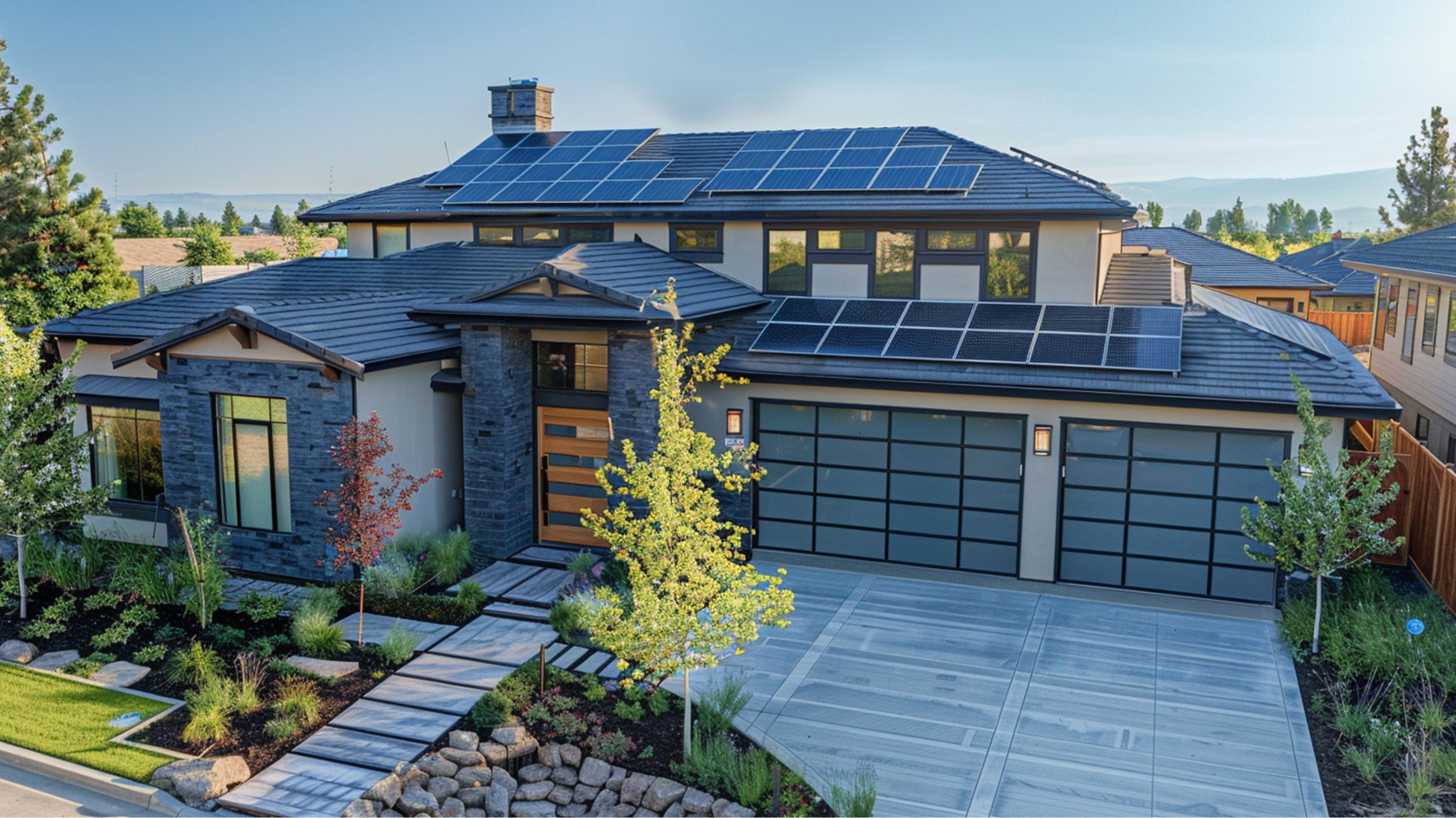Transform Your Home into a Profitable Power Plant
Imagine your home not just saving you money on energy bills, but actually generating income. Welcome to the world of energy-positive homes – properties that produce more energy than they consume, turning your house into a revenue-generating asset.
What Are Energy-Positive Homes?
An energy-positive home (also called a net-positive energy home) is a residential building that generates more renewable energy than it uses over the course of a year. Through advanced solar panel systems, superior insulation, and smart energy management, these homes don’t just achieve net-zero energy – they surpass it.
How Energy-Positive Homes Make You Money
1. Sell Excess Energy Back to the Grid
The primary way energy-positive homes generate income is through net metering programs. When your solar panels produce more electricity than your household needs, the excess power flows back into the utility grid. Your energy company credits your account or pays you directly for this surplus energy.
Average earnings: Homeowners can earn anywhere from $400 to $1,200 annually, depending on system size, location, and local utility rates.
2. Solar Renewable Energy Certificates (SRECs)
In many states, you can earn Solar Renewable Energy Certificates for the clean energy your system produces. Each SREC represents 1,000 kilowatt-hours (kWh) of solar electricity. These certificates can be sold on SREC markets, providing additional passive income.
3. Increased Property Value
Energy-positive homes command premium prices in the real estate market. Studies show that homes with solar energy systems sell for 4-6% more than comparable properties. That’s an additional $20,000-$30,000 on a $500,000 home.
4. Tax Incentives and Rebates
Take advantage of:
- Federal Solar Tax Credit (Investment Tax Credit)
- State and local renewable energy incentives
- Utility company rebates for energy-efficient upgrades
- Property tax exemptions for solar installations
Key Technologies for Energy-Positive Homes
Solar Panel Systems
High-efficiency photovoltaic panels are the cornerstone of any energy-positive home. Modern panels convert 20-22% of sunlight into electricity.
Battery Storage Systems
Home battery storage (like Tesla Powerwall or LG Chem) stores excess energy for nighttime use or grid sales during peak pricing periods.
Energy-Efficient Design
- High-performance insulation and air sealing
- Energy Star appliances
- LED lighting throughout
- Smart thermostats and energy management systems
- Triple-pane windows
Geothermal Heating and Cooling
Geothermal heat pumps can reduce heating and cooling costs by 30-60%, making it easier to achieve energy-positive status.
Real-World Example: The Numbers
Consider a typical energy-positive home in California:
Investment: $35,000 (after tax credits)
- Solar panel system: $25,000
- Battery storage: $10,000
Annual Savings & Income:
- Eliminated electricity bills: $2,400
- Net metering credits: $800
- SREC sales: $600
- Total annual benefit: $3,800
Payback period: 9-10 years 30-year return on investment: Over $75,000 (not accounting for rising energy costs)
Steps to Create Your Energy-Positive Home
1. Conduct an Energy Audit
Hire a certified energy auditor to identify where your home loses energy and what improvements will have the greatest impact.
2. Maximize Energy Efficiency First
Before adding renewable energy, reduce your consumption through insulation upgrades, efficient HVAC systems, and smart home technology.
3. Install Solar Panels
Work with reputable solar installers to design a system sized to exceed your energy needs.
4. Add Battery Storage
Store excess energy and maximize your financial returns by selling power during peak rate periods.
5. Monitor and Optimize
Use energy monitoring systems to track production, consumption, and earnings in real-time.
Is an Energy-Positive Home Right for You?
Energy-positive homes work best for:
- Homeowners in areas with high electricity rates
- Properties with good solar exposure (south-facing roofs)
- Regions with strong net metering policies
- Those planning to stay in their home long-term
The Future of Energy-Positive Living
As renewable energy technology improves and costs continue falling, energy-positive homes are becoming increasingly accessible. Some experts predict that by 2030, energy-positive design will become the standard for new construction.
With climate concerns rising and energy costs fluctuating, transforming your home into an energy-producing asset isn’t just environmentally responsible – it’s financially smart.
Conclusion
Energy-positive homes represent the convergence of sustainable living and financial opportunity. By generating more energy than you use, you’re not just reducing your carbon footprint – you’re creating a new income stream and increasing your property’s value.
The transition to an energy-positive home requires upfront investment, but the long-term financial and environmental benefits make it one of the most impactful improvements you can make to your property.
Ready to start making money from your house? The sun is literally offering you free energy – it’s time to cash in.
